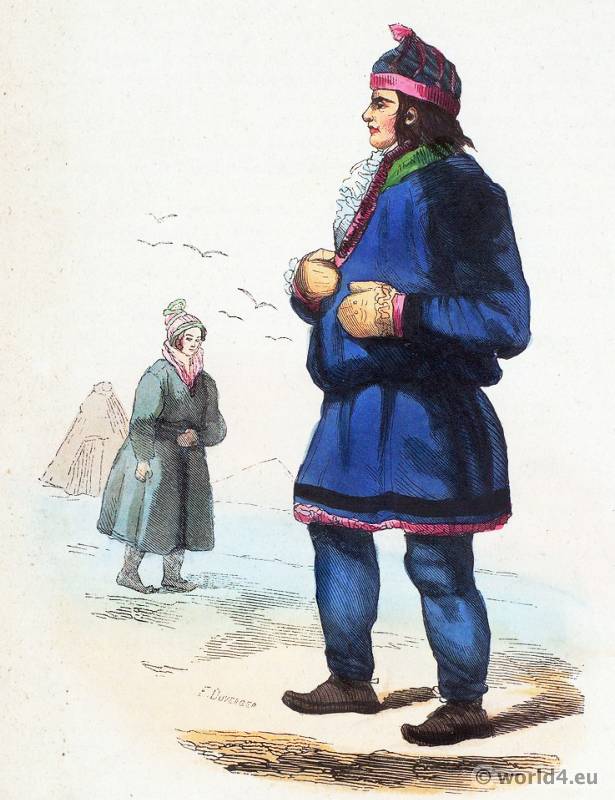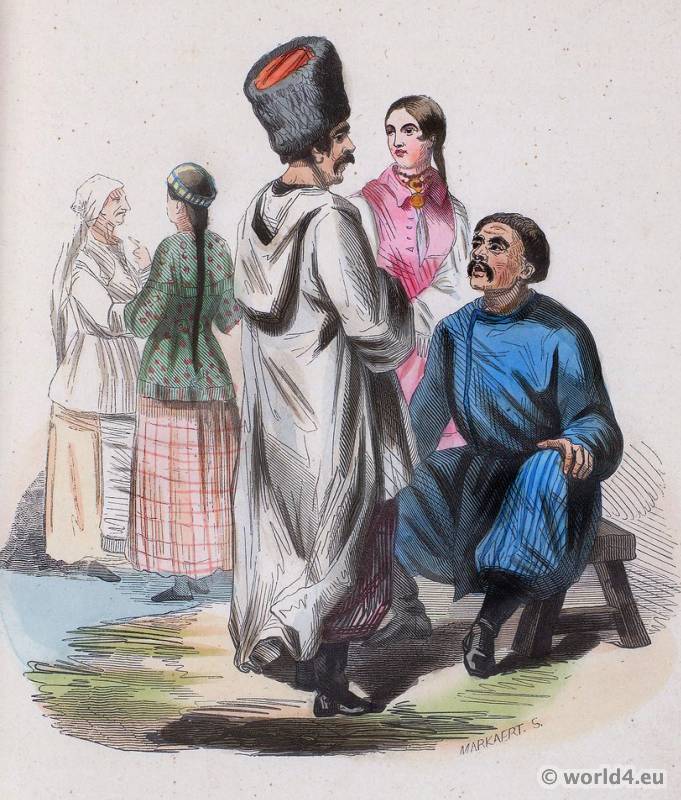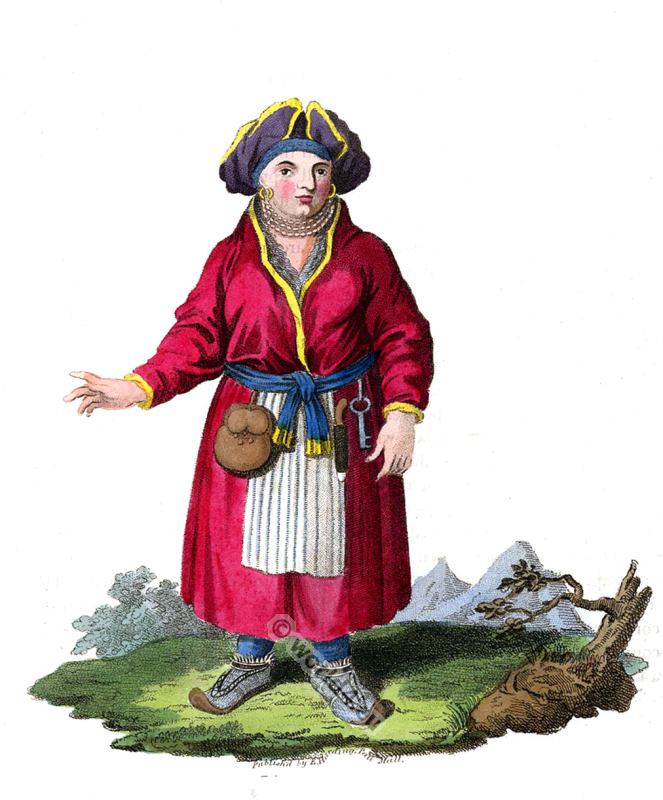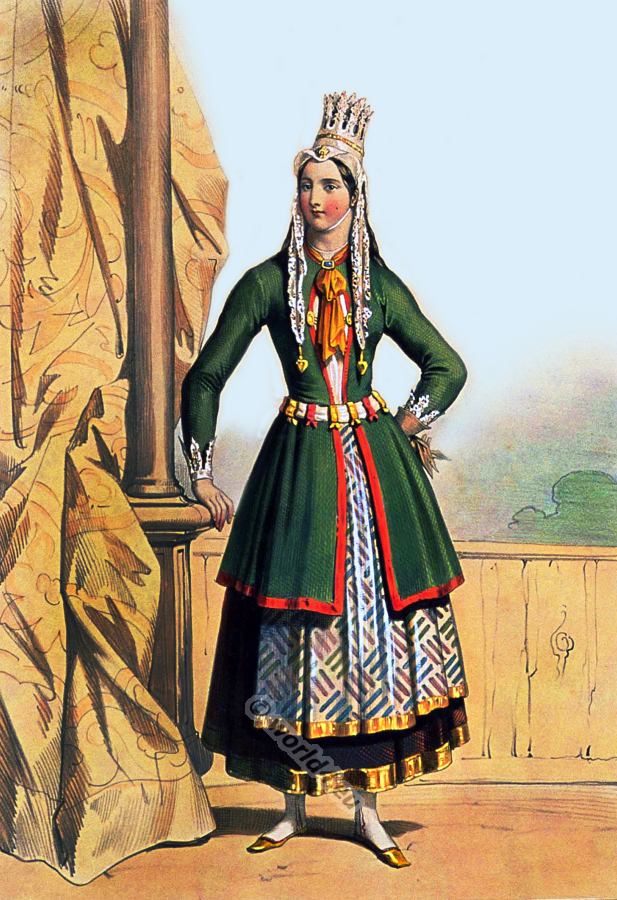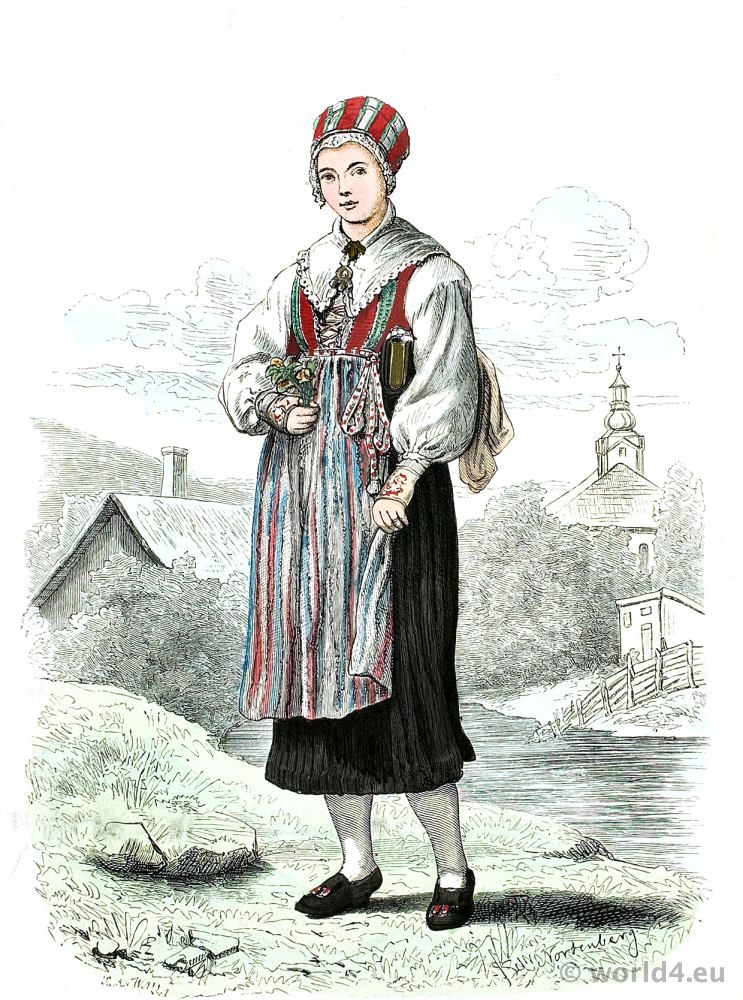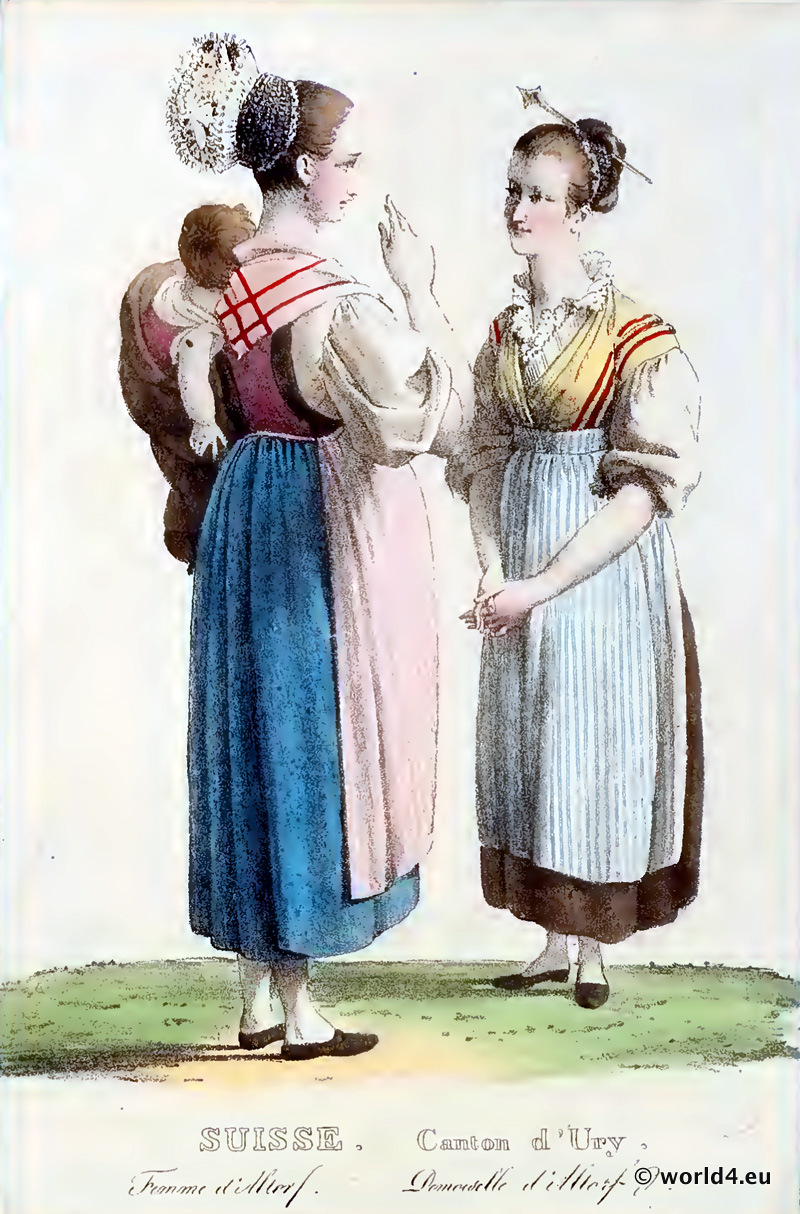
SWEDEN, ICELAND AND LAPLAND.
Scandinavian costumes.
No. 33 Swedish Sudermanland, locally Sörmland, (Sudermannia or Sudermania,). Wingakir Parish (Vingåker).
Hawker. – Winter coat of sheepskin, held together by a belt of red cloth. The hair under a picturesquely arranged linen headscarf with fringes.
No. 34, 35 and 36 Dalekarlien (Today’s Dalarna County). Parish of Leksand.
Family in Sunday state (summer costume). – The landlord, a daneman, i.e. a free farmer, wears a red overcoat with embroidered shoulder pieces, which is held together by a similar agraffe. Underneath is a vest with a red push. White trousers and stockings with coloured garter. Cut-out shoes and low felt hat.
The woman in the low, front laced bodice. The shirt, held together above the bodice by a buckle, separates into two wide lapels with coloured wool embroidery; above it a linen bosom cloth. The pointed hood covers the hair. Apron of striped wool fabric. The apron band forms a belt, the ends of which fall sideways. Short striped skirt of dark colour. White stockings, shoes whose detail gives no. 36. The bonnet of the child is similar to the Kallarna of the married woman, only in the neck open for the hanging braids.
No. 37. Swedish province of Bleking.
Young woman in summer costume. – A hairdresser, usually also a farmer’s wife, arranges the plait around the bonnet. The bodice made of black silk or velvet with white silk or silver ribbons leaves the wide sleeves of the shirt free, which is closed at the neck with an agraffe (see nos. 19 and 20 of the decorative plaque), the blue silk scarf on the woman’s knee is worn under the bodice and beaten up under the agraffe. The apron covers most of the skirt. Shoes with rosette and small silver buckle. Married women wear rings, young girls wear pearl necklaces and needles.
Nos. 38 and 39 Dalarna County. Parish Rättvik.
Farmer and girl in Sunday state. – The farmer wears a skirt, vest and stockings of the same colour, blue-black or brown. Trousers of similar or leathery colouring. Hat cord with acorns at the ends. Skirt and collar with red protrusion.
The female headdress is peculiar. Above the lace-trimmed linen bonnet a high black red-trimmed cap, which reminds of the Asian Pileus with its point, closed at the back of the women, open when young girls. The bodice is laced in front, held by armpit bands. The neckerchief is fastened by a knot and two buckles. Narrow striped apron as worn by the Italians, short dark coloured skirt, very thick red stockings, which fall with a fold on the shoes. The bodice is red for the women, blue or black for the girls.
No. 42 Skåne, Jetrestad district.
Half of the costume picture belongs to the group of fiancées on the table with the shotgun cock No. 18 and No. 29 on the table with the crowned A.
Number 48. Iceland.
Young girl from Reykjavik in festive dress. The dark or black shawl waist is galoned in front and behind with silver embroidered velvet. Four red velvet stripes at the hem of the dress. A stiff black collar surrounds the neck. It is embroidered with a regular pattern in silver. A second similarly embroidered neck collar is turned over in the neck (the embroidered pattern as well as the detail of the simple leather shoe at the lower end of the panel).
The blonde hair of the Icelanders, usually worn loose, disappears on festive occasions under a black silk cloth with a red border, over which a stiffened piece of canvas, carried forward, rises like a helmet comb.
The sleeve is galoniert and slit at the wrist with silver. The opening is closed by bell-like silver buttons. The belt, fastened by a buckle, is covered over and over with golden or silver ornaments in the form of oak leaves or heart-shaped plates. A chain with a medallion hangs down from a golden necklace.
Source: History of Costume in Chronological Development by Auguste Racinet. Edited by Adolf Rosenberg. Berlin 1888.
Related
Discover more from World4 Costume Culture History
Subscribe to get the latest posts sent to your email.

